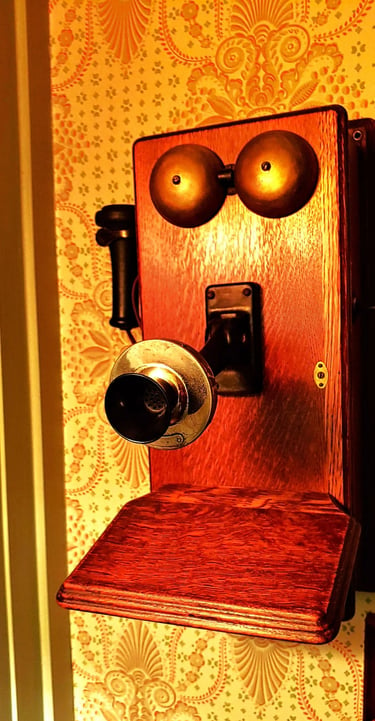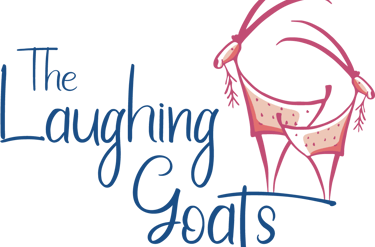

Ft Oglethorpe/Chickamauga, Georgia Travel - Civil War Tragedy & Triumph
War time tragedy & triumph - the personal acts of bravery & sacrifice by men, women, and children during the Civil War are on display at Ft. Oglethorpe's Chickamauga Battlefield National Military Park. Visit the 1891 Coke Ovens & the Gordon-Lee Mansion & Mill for an immersive historical experience.
Perfect for a weekend trip. Free entry to Chickamauga Battlefield sites in Fort Oglethorpe. Stop at Ft Oglethorpe's Visitor's Center. You can drive or bicycle to the battlefield sites. Parking is available at several sites.
Great add-on trip: Best Historical Sites.
Civil War: Tragedy & Triumph
In 1733, James Oglethorpe landed in North America and established England's last colony of Georgia, named after King George II. Fast forward to 1902 when the U.S. Army established a post in Ft. Oglethorpe which would later house 4,000 German prisoners & civilians during World War I, 1914-1918.
The Civil War, 1861-1865 divided north & south because of differing viewpoints. Slavery and the balance of power in government were the top 2 factors that divided our nation. The south may have fought for slavery because their economy was agriculture/farming, while the north focused on industry/manufacturing.
Once divided - President Abraham Lincoln commanded 20 north/Union states & President Jefferson Davis controlled 11 south/Confederate states. There were also 5 border states (slave states) that separated north from south. 36 states in total.
Fort Oglethorpe, Georgia
The Brotherton Cabin
The Brotherton Cabin sits on 750 acres inside the Chickamauga Military Park. Their 2 sons fought with the Confederates in the Chickamauga Battle, but the rest of the family was forced to flee.
Being empty, the Brotherton cabin was turned into a hospital while the family endured cold & hunger in a ravine about one mile away.
Near the end of the battle, the youngest daughter returned to check on the home & she miraculously found 4 of their cows still alive.
Location = Chickamauga Military Park. 3370 Lafayette Rd, Fort Oglethorpe GA.
The Battle of Chickamauga was the second bloodiest battle of the Civil War, and happened on Sept 18-20, 1863 in Fort Oglethorpe GA. The name Chickamauga comes from the creek that runs thru the area. The Cherokee word Chickamauga means: "river of death" or "stagnant water". The Battle of Chickamauga erupted over who would control the railroad town of Chattanooga TN (just north of Ft. Oglethorpe) - and "a gateway to the south".
One notable advantage the Union army had was the Spencer rifle used by the famous mounted infantry the "Lightning Brigade". This rifle could shoot 14 rounds/minute, whereas the average rifle could only shoot 2-3 rounds/minute.
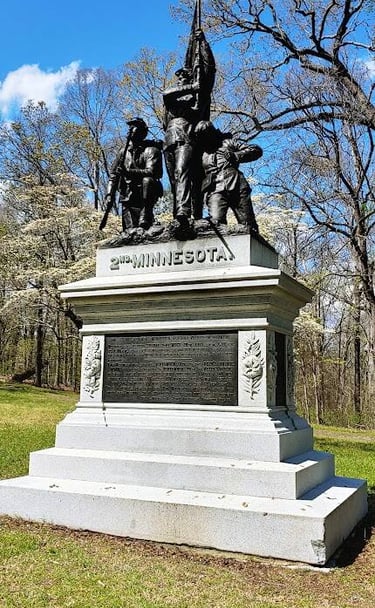

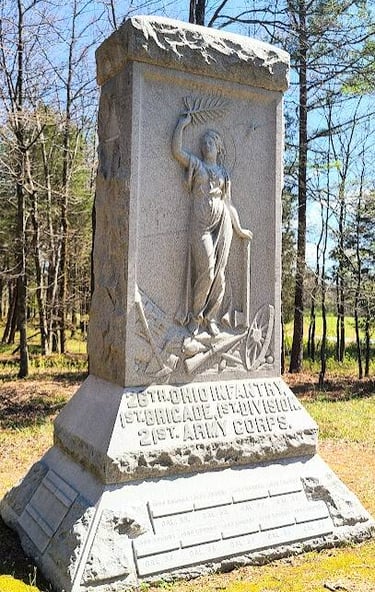

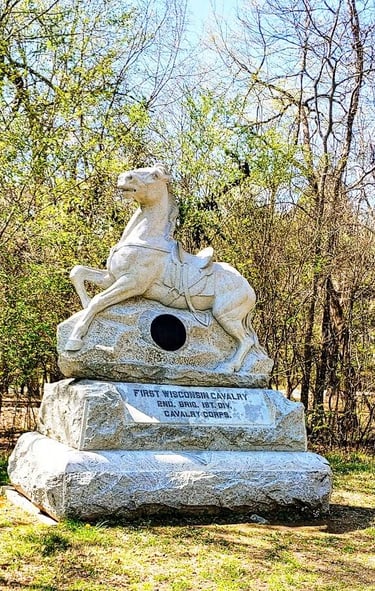



Chickamauga Military Park
War Trajedy Leads to Triumph
The Wilder Tower
The Wilder Tower was built to honor the Lightning Brigade, a mounted infantry that transformed military tactics. Soldiers in this battle = 34,624. All were included in the casualty estimates: killed, wounded, missing, or captured.
In 1865, the Civil War ended & slavery was abolished. Twenty years later the Statue of Liberty arrived in New York. It became a symbol for our nation representing our values of equality, democracy and freedom.
Civil War Veterans & other groups rallied to create a national military park to preserve the Chickamauga Battlefield in Georgia and Point Park & Missionary Ridge in Tennessee. Congress passed it in 1890.
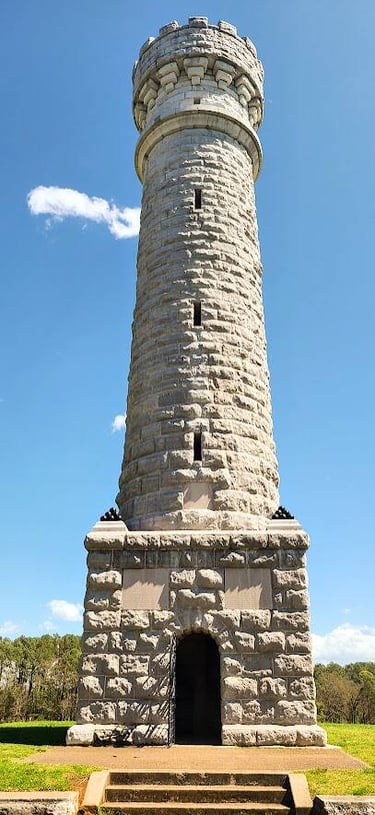

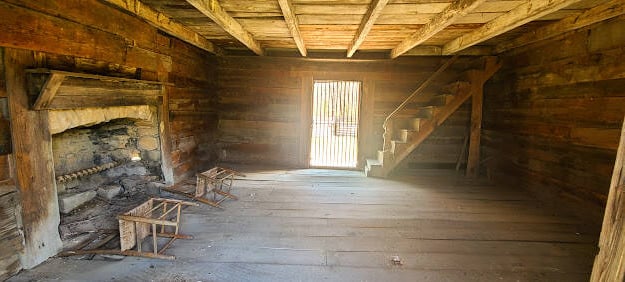

Gordon-Lee Mansion
Location = Gordon-Lee Mansion. 217 Cove Rd, Chickamauga GA. Saturday tours, Memorial Day to Labor Day + some holidays. Cheap entry fee.
James Gordon began construction of his home, the Gordon-Lee Mansion in 1840, which took 7 years to complete. It sat on 2,500 acres and the home's walls are an impressive 16 inches thick at the base and 12 inches at the top.
The land itself previously served as a Cherokee Courthouse, prior to Georgia taking political power & rights away from the Cherokee. The Cherokee were eventually removed altogether. The town of Chickamauga was originally called Crawfish Springs after Chief Crawfish & his tribe who were the first to settle there.
During the Civil War, the Gordon-Lee Mansion served as a hospital where both Union & Confederate soldiers were treated. When the family returned home, they found blood stained floors & scribbled messages to loved ones on the walls.
James Gordon & his wife left the home to their daughter Elizabeth & her husband, James Lee, who in turn passed it to their son, Gordon Lee. This is how the Gordon-Lee Mansion got it's name. Gordon Lee saw a need and started a school on the property for all children in the community. He also donated $250,000 plus 15 acres for the Gordon Lee Memorial High School - still in use today.

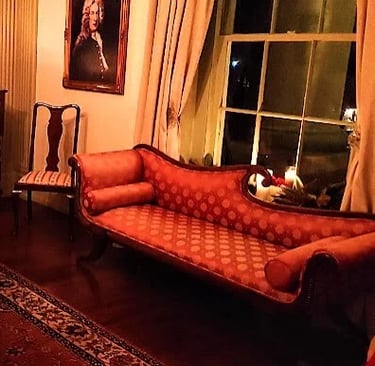
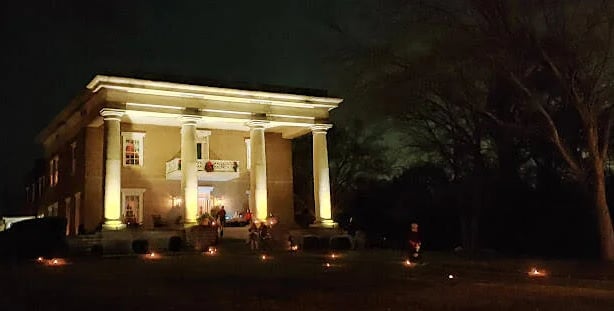





Chickamauga, Georgia
The Gordon-Lee Mansion converted one of the upstairs rooms into a museum with an impressive collection of photos and letters. The museum also has the first prosthetic device, a wheelchair, rifles from the 1800's and other Civil War artifacts.
Want to know where our phrase: "bite the bullet" came from? YES, it literally means what it says - soldiers would bite down on a bullet during surgery or amputation. Who came up with that horrible idea? I can think of other things to bite down that wouldn't crack off half my teeth.
The museum also has letters from the current President. Notice that James Gordon even had a portrait of George & Martha Washington. How many President portraits do you see in homes today? Probably zero.... unless it was your husband or close relative.
In 1889 a Blue-Gray (Union & Confederate) BBQ was hosted on the grounds. Fellowship, food, and a peace pipe were enjoyed by 14,000 Civil War veterans. In 1974, the house was sold & restored, including it's furnishings, both 18th and early 19th century antiques.




Gordon-Lee Museum
Location = Coke Ovens. State route 223, off 341/Chickamauga Rd, Chickamauga GA.
When I first heard "Coke Ovens" I was totally puzzled. I was pretty sure they weren't referring to Coca-Cola or the cocaine drug - even though cocaine was originally an ingredient in Coke. As I learned, Coke Ovens were used for something entirely different.
The Coke Ovens have not been used for 65-70 years and the site's been abandoned which is why the vines & shrubs have overtaken quite a bit. When we first arrived, it looked empty. Walk towards the empty field going towards the train. From the field, you'll see a row of signs and a row of Coke Ovens in the background.
The beehive shaped Coke Ovens with greenery all around reminds me of the Hobbit movie. I half expected Frodo & Bilbo to pop out of the shire. At the risk of going a little coo-coo crazy, I'll pass on looking for "My Precious"!
Coking history began in the 1700's with modifications made in 1768 to better convert black coal into coke. So, what is a coke oven? Coal is inserted into a brick oven, then heated to separate the gas, water, and tar. Coke is a hard substance that forms when gas, water, carbon, and ash fuse together and is primarily used in the production of steel & iron.
The Durham Mines on Lookout Mountain, GA began transporting coal to this site in 1891. Mule driven wagons made their way to the railroad, which then made their way down the mountain on a winding, perilous route 2x per day. The mines produced 700-1000 tonCoke ovens of coal per day by 1904.
Coking requires the oven to reach temps of 1,800-2,000, or up to 3,600 degrees F. That's like rocket launch HOT. The whole area must have been black and barren. How could workers even get close enough to add more coal? By the 1950's, over half of the coke ovens were destroyed. Today, 36 remain. With the original 75-ish ovens - it's impossible to imagine what the air smelled like, or how difficult it was to breathe with all the toxic gas in the air.




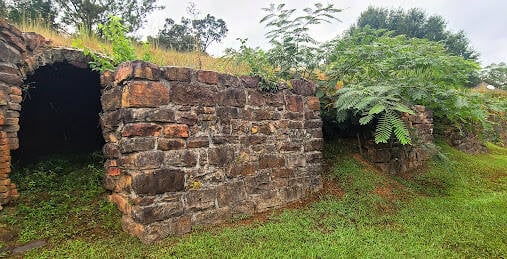

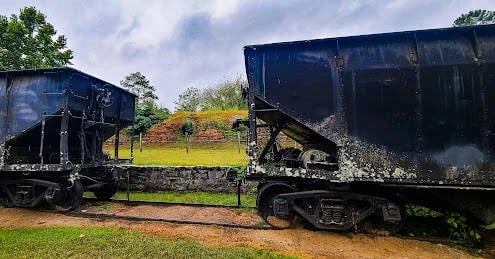

Coke Ovens
Location = Lee & Gordon's Mill. 71 Red Belt Rd, Chickamauga GA. Free tours are available Tue-Sat, 9am-5pm. You can also buy fresh cornmeal.
James Gordon built the Lee & Gordon's Mill on the banks of the Chickamauga Creek, shortly after moving to the area in 1836. Early settlers called it a grist mill - a mill where cereal grains were ground into meal (coarse powder). Mills in those days were powered by water. In 1857, he rebuilt the 2 story structure and added the first general store & water-powered sawmill.
The Lee & Gordon's Mill, nearby blacksmith shop, and the weekly mail stop made it a community gathering place. Whoo-hoo, the fun they must have had!!! Sorry, too sarcastic? By the Civil War, James Lee (the son-in-law of James Gordon) was running the Mill.
Union soldiers seized the Mill and took Mr. Lee prisoner, forcing him to continue working to supply the troops with meal. In later months, the Confederates captured it - so each army took their battle stance on opposite sides of the creek.
Photo below left - Civil War era 1861-1865 from USA archives, with the Lee & Gordon's Mill in the background.


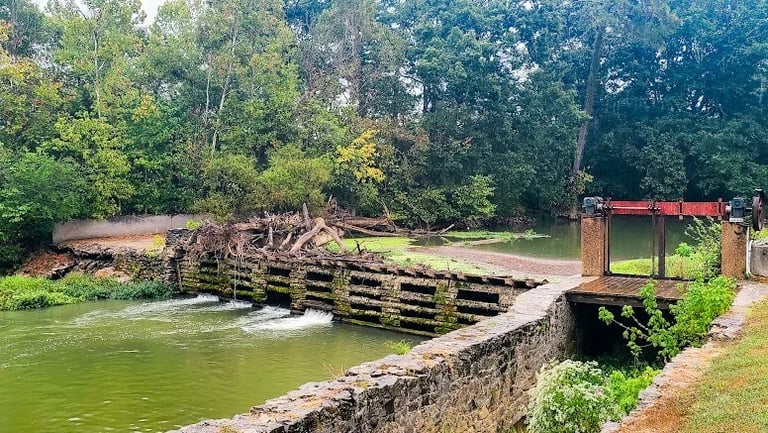

Lee & Gordon's Mill
Vacation Travel Tips
Average temps high/low = Summer 90/66 degrees F. Winter 51/28. GA ranks 5th in humidity & 7th for hurricanes. Winters are short & summers long. Tornado season is Mar-May. Expect snow in mountain regions.
Backpack essentials - water, bug spray, sunscreen, whistle, flashlight, cell phone, pocket knife, and a light jacket.
Winter Essentials - thermal blanket, waterproof boots, and warm clothing.
Hiking conditions - trails can be wet & slippery after summer rains. Prepare for snow in higher elevations.
Vehicle safety – Keep a spare blanket, boots, jacket, gloves, and snacks in the car. Winter roads can be icy & covered in snow - use “winter” tires. If you only have "all season" tires, take snow chains.
Wild animals - black bears are becoming bolder in parks/campsite areas mostly due to food. Coyotes, cougar, bobcat are also present.
Trash - Pack out what you pack in.
Rivers/lakes – river shoes are helpful. Heavy winter rains means deep, ice-cold & fast moving water.
Poison oak - always know before you touch. 3 leaflets per stem, with slightly rounded tip. Poison ivy has the pointy leaf-tips.
Snakes - there are 6 poisonous types - on land, water & in trees. They generally prefer to avoid humans & biting usually to avoid harm.
Wilderness areas – take a buddy & tell someone your travel plans.
